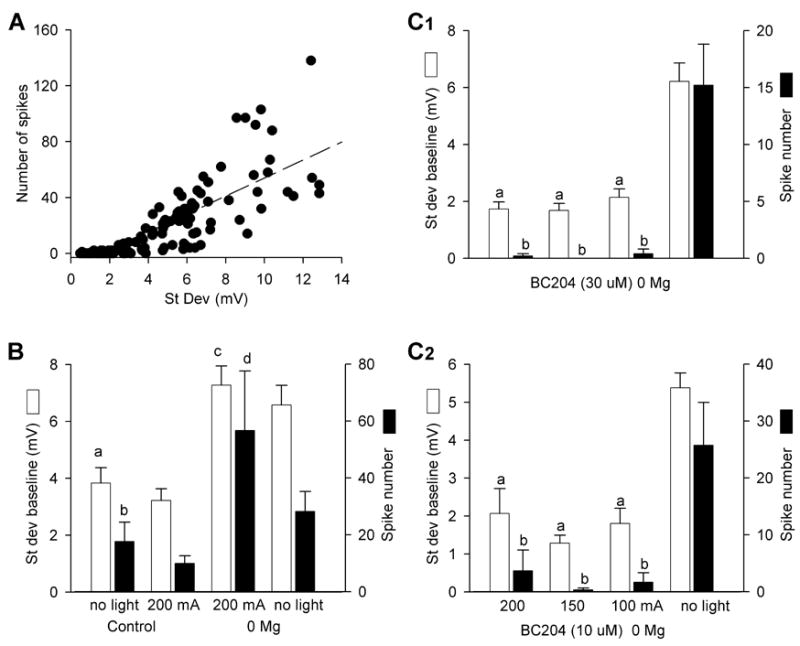Figure 4.

Quantification of seizure-like behavior in cultures. A. The number of spikes in a 10 sec interval was correlated with the standard deviation (mV) of the recording baseline (156 intervals; r2 = 0.66). B. In control and zero magnesium extracellular perfusate, UV LED illumination does not alter excitability in the absence of BC204 (a, b p = 0.25 and 0.46, respectively, compared to control plus light, n = 12–24 cells; c,d p = 0.39 and 0.10, respectively, compared to zero magnesium plus light, n = 6–17 cells, both by Student-Newman-Keuls test (SNK)). The larger baseline standard deviation and spike counts in the illuminated zero magnesium cultures reflects the variability in the seizure-like activity produced by magnesium withdrawal. Baseline standard deviations and spike numbers were significantly different between control and zero magnesium groups (p < 0.001 and p < 0.05, respectively by SNK). C1. In the presence of BC204 (30 μM) and zero magnesium, UV LED illumination using 200, 150, or 100 mA of current significantly reduced baseline standard deviation and spike number compared to 10 sec epochs in which there was no UV LED illumination (a p < 0.001 by SNK, compared to BC204 “no light”; b p < 0.05 by SNK, compared to BC204 “no light”, n = 9 – 11 cells). C2. In the presence of BC204 (10 μM) and zero magnesium, illumination with 200, 150, or 100 mA of UV LED current again significantly reduced both parameters compared epochs in which there was no UV LED illumination (a p < 0.001 by SNK, compared to “no light”; b p < 0.05 by SNK, compared to “no light”, n = 6 cells). C1 and C2 have the same abscissa. Bars in A –C are SEM.
